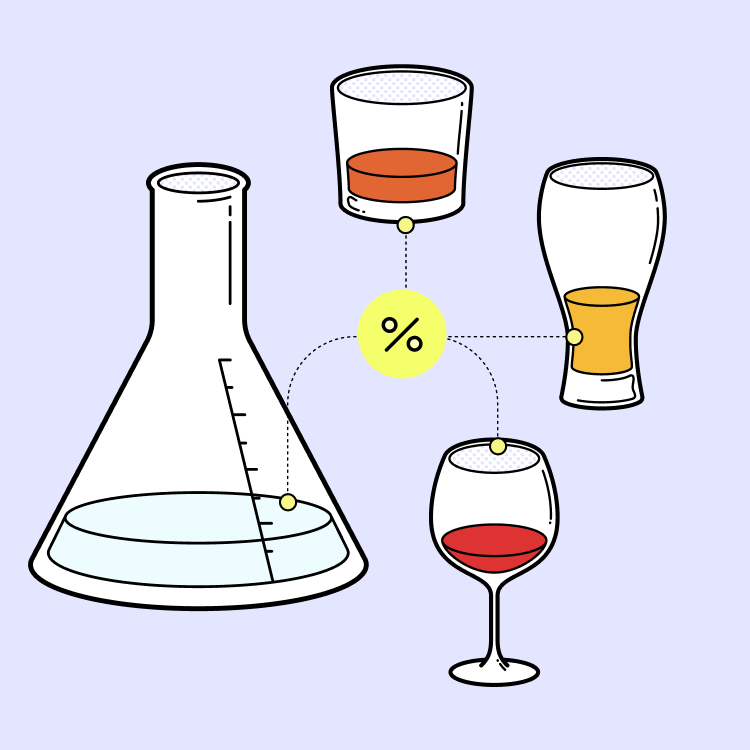Social and economic factors play an important role in health. Poorer people suffer from worse health than the wealthy virtually everywhere in the world. Global attention is increasingly focusing on the so-called ‘social determinants’ of health and their relationship with both chronic diseases and infection (1, 2).
Social determinants also play an important role in the outcomes of drinking. While excessive drinking is a risk factor for certain diseases, its impact is generally worse on the poor.
While this article can’t give this important topic its full due, it’s intended to start the conversation around these disparities using the example of the United States, where the relationship between alcohol use disorders and socio-economic factors is further compounded by a strong correlation with ethnicity.
There’s an ‘ethnic paradox’ in the US
Disadvantaged socioeconomic groups in the US include a large proportion of minorities, notably Black, Latino and Indigenous peoples. These communities have worse health overall and higher rates of diabetes, cardiovascular disease and obesity. Due to some of these underlying factors, the risk of dying among poor minorities is higher than among the wealthy and those who are White.
While people who are more disadvantaged are less likely to drink and generally drink less than affluent people, as a group, they experience more harm from their drinking. In the US, this presents an ‘ethnic paradox’. Negative health outcomes are more widespread among African Americans (3) and Indigenous groups (4), both overrepresented among the disadvantaged.
Lack of resources leads to increased impact
Part of the disparity lies in limited access to prevention and quality healthcare for the less well-off, and, by extension, to certain ethnic groups. Research shows that among Black Americans, those more disadvantaged have less access to resources to help them deal with problem drinking and to treatment for Alcohol Use Disorders (AUD) (5). Part of the disparity, however, also lies in the prevailing drinking cultures within individual ethnic groups, which are as varied as the backgrounds of the US population.
Behaviors vary between and within communities
Behaviors vary between communities, and even within them, reflecting diverse cultural views of alcohol captured under each broader ethnic group. Drinking among White Americans reflects the array of European traditions, for example, while Asian Americans’ drinking reflects the cultures of Japan or China, as much as it does of countries like Pakistan or India.
That said, of all groups in the US, White Americans are most likely to drink (1). Black people are two times less likely to have heavy drinking occasions and binge drink than White people (2). Latino youth are more likely to start drinking, binge drink and get drunk at an earlier age than either White or Black youth (3). As a group, those with Asian ethnicity are the lightest drinkers of all (1).
What’s ‘acceptable’ can vary
Traditions and attitudes towards alcohol, as well as the norms and belief systems of different ethnic groups, are reflected in how and when people drink. They determine what’s considered acceptable behavior, whether within the context of family or more broadly in social interaction.
For instance, among Latino people in the US, there’s generally high disapproval of drinking by women and heavy drinking and drunkenness are viewed as male activities (4). Black and Asian American youth have been found to be more likely than White youth to perceive heavy drinking as risky and to disapprove of heavy drinking (6).
In catering events, we found Black patrons always drank less. And if it’s a family event, even less. They’d come to the bar and say, “Can you keep it at the bar? I’m with my grandmother.” Out of respect, they don’t want their elders to see them drink. And it goes both ways. My grandfather and his friends would sit in his car in his driveway instead of in the house – “so your kids don’t see you drink”. I think Black youth see drinking as the more acceptable escape. They’re more reluctant to buy cigarettes, for example, than have a cocktail.
- Tren’ness Woods-Black, owner Sylvia’s Restaurant and Cornbread and Conversations, Harlem, New York
Religious beliefs were more likely to be identified by Latino and Black people than among White people as playing a role in drinking, and were more likely to translate into abstaining or drinking very little. Research studies have found that these beliefs can be a protective factor against heavy drinking and AUD (6, 7).
New generations take on the culture of the majority
Among recent immigrants, the culture and traditions of their heritage are stronger and more likely to influence drinking behavior than among those born in the US. This shift in normative behavior is called ‘acculturation’ and describes the gradual blending into the culture of the majority population. In general, those born in the US or who arrived at a young age are more likely to drink and to binge drink than their immigrant parents, whose cultural views can be protective against heavy drinking. This has been studied extensively in Latino and Asian American communities in the US (8-10).
US-born Latinos sometimes want to fit in and feel a part of the general population. That’s why they might follow the trends and adopt the behavior of those around them. Some studies also suggest parental supervision decreases with acculturation. Both factors help explain why we tend to see increased alcohol use among Latino youth.
- Jeannette Kaplun, CEO and Founder Hispana Global
Adversity can be a factor
Another reason for some of the differences among ethnic groups is indirectly related to culture and mediated through the social and economic issues and challenges that face minorities. Among Black people, racial discrimination may be associated with alcohol use and problems (3), and early initiation of drinking in response to acculturation stress has been described among young Latinos (11). Drinking, particularly heavy drinking, may be used as a coping mechanism – especially by young people, who are both more vulnerable and have less developed coping skills than older adults. Similar issues have been observed among Indigenous youth, for whom coping also often includes excessive drinking.
Explore more
Here are some resources that shed additional light onto this complex issue in the US and address the ethnic disparities in social determinants. The National Institute on Alcohol Abuse and Alcoholism (NIAAA) offers information on minority health disparities, and Centers for Disease and Prevention (CDC) National Health Interview Survey has findings on ethnic differences.
The solution to the problem is equally complex, but health literacy and resiliency skills can be a first step, along with the ability to identify and address problems when they arise. Community-based resources may be available, even where healthcare access is limited. The Substance Abuse and Mental Health Services Administration (SAMHSA) provides a national helpline, resources for substance use treatment and programs for Native Youth. If you have concerns about your own drinking, or someone else’s, we encourage you to take our alcohol use self-assessment test and to seek the advice of a trained healthcare professional.
In this discussion, we’ve opted for broad and neutral terminology in an effort to be as inclusive as possible of ethnic groups living in the United States. We use ‘Black’, rather than ‘African American’, as not all Black Americans are of African descent. Similarly, we refer to ‘Indigenous’ peoples and groups rather than ‘American Indians’ or ‘Native Americans’ to also include Pacific Islanders and Alaska Natives. The term ‘Latino’ was chosen to cover the range of peoples of Latin American origin, not only those who are native speakers of Spanish or ‘Hispanic’. While the term ‘Asian American’ covers a wide range of origins, it’s currently the preferred umbrella term in the United States.




